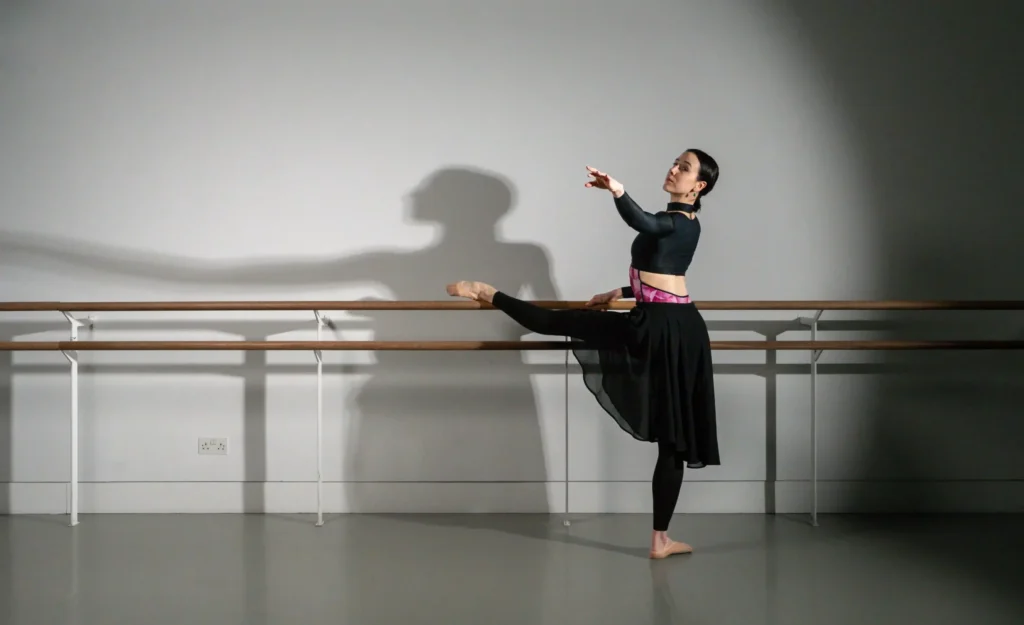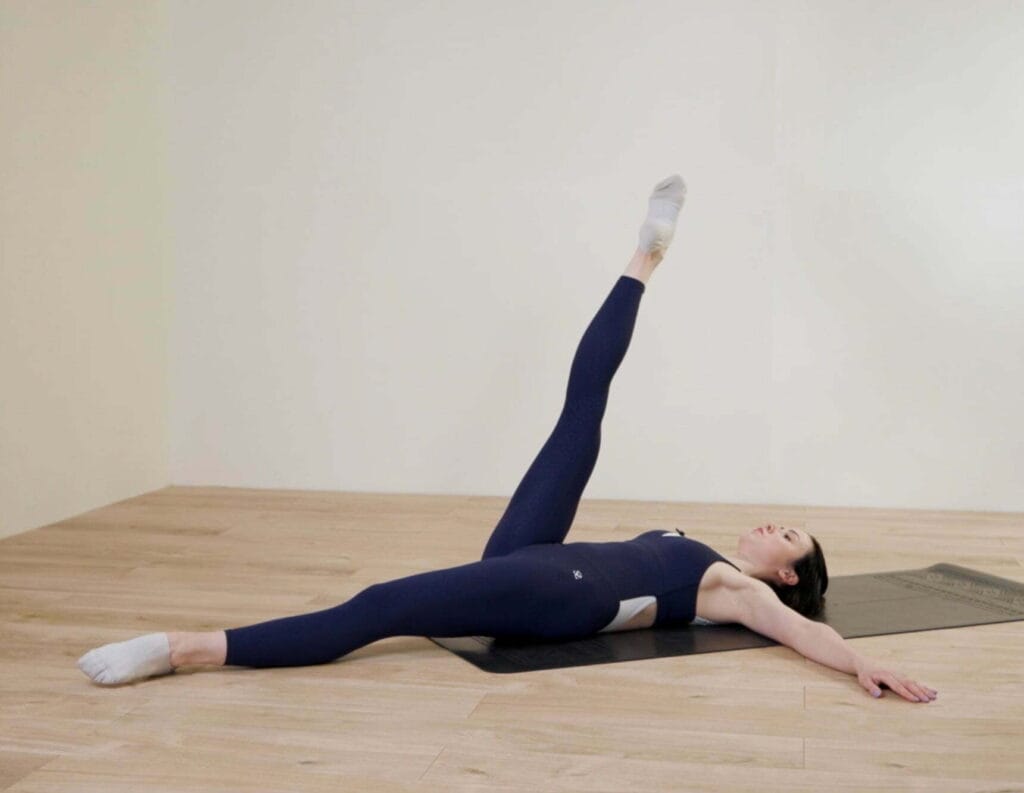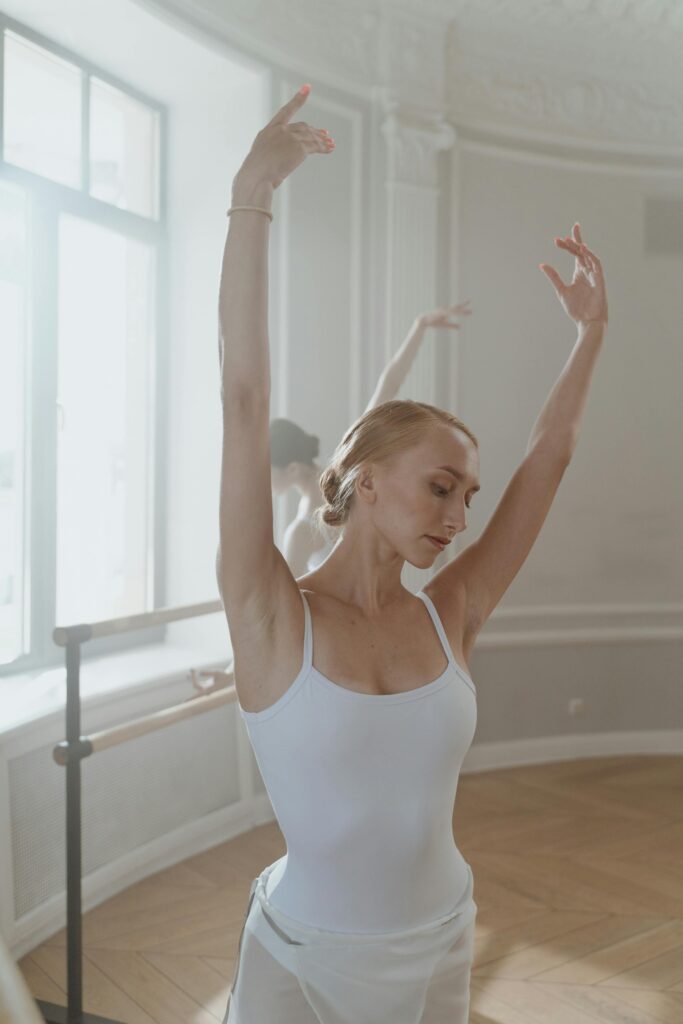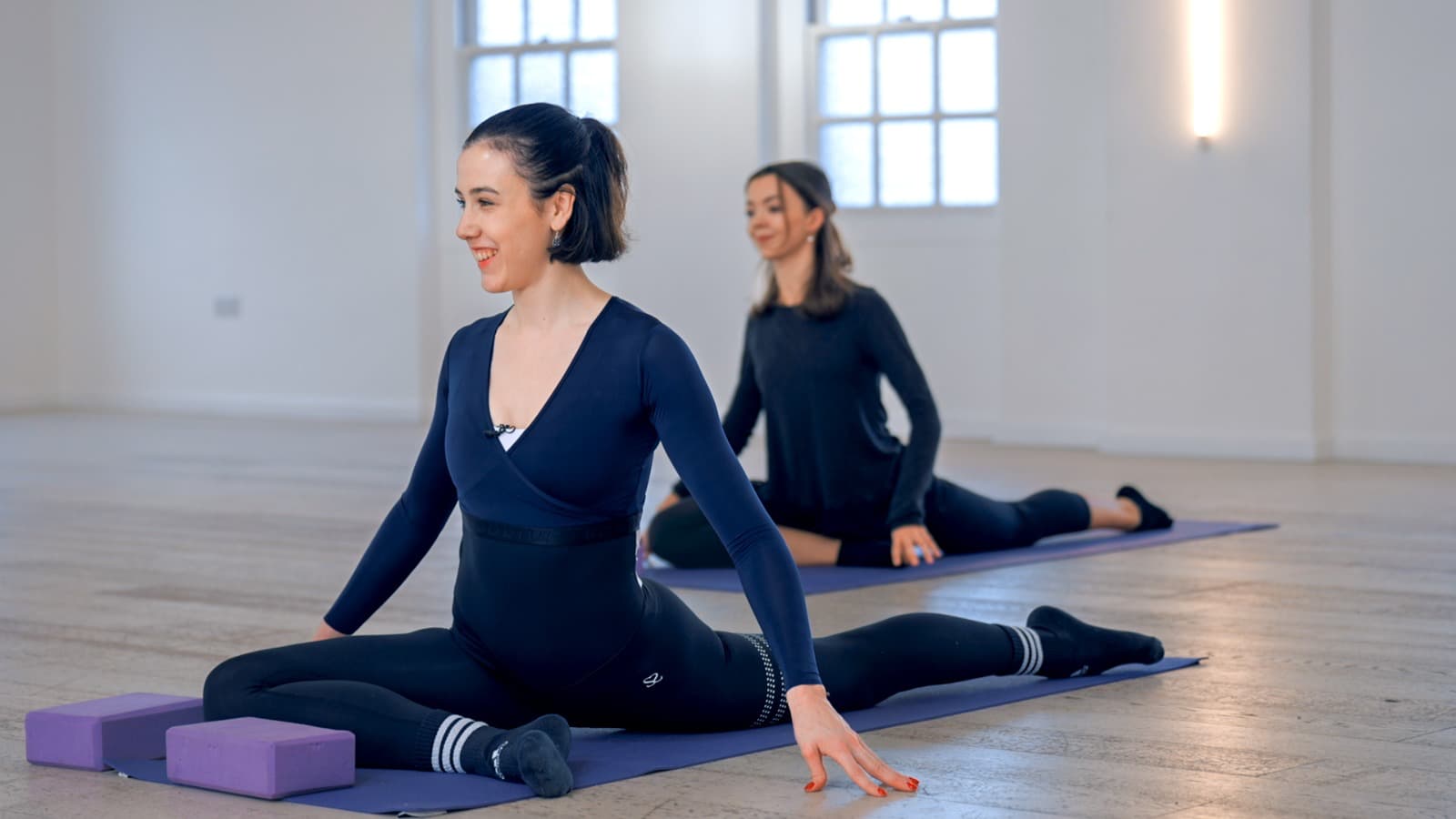Hip flexor strength is essential for ballet dancers because they need to be able to work to lift the leg in front of the body for jumps as well as to achieve 90 degrees or higher in order to execute moves like développés, arabesques, and grand battements. Additionally, strong hip flexors are essential for maintaining proper alignment in the pelvis and lower back, improving posture and risk of back pain. With that in mind, here are some key exercises, stretches, and advice for strengthening your hip flexors.
What are the hip flexors?
The hip flexors are a group of muscles that work together to flex or lift the thigh towards the body. These muscles are located in the front of the hip and are responsible for pulling the thigh bone (femur) up towards the pelvis. The hip flexor muscles include the psoas major, iliacus, rectus femoris, sartorius, and the tensor fasciae latae.
The psoas major and iliacus are often referred to as the iliopsoas muscle, as they work together to flex the hip joint. The rectus femoris is a muscle in the quadriceps group that also assists in hip flexion, while the sartorius muscle runs across the front of the thigh and helps to flex and rotate the hip. The tensor fasciae latae muscle is a small muscle that attaches to the pelvis and helps to stabilise the hip joint during movement.
For your hips to be strong and flexible, each of these muscles need to be worked on consistently.
Passive and active stretching for your hip flexors
Stretching and releasing the hip flexors is just as important as strengthening them, as tightness in these muscles can lead to pain and discomfort. When it comes to hip flexor stretching, there are two main types of stretches: passive and active/dynamic stretching.
Passive stretching involves holding a stretch in a relaxed position with the assistance of gravity or external props, such as a strap or a partner. This type of stretching is generally done at the end of a workout, after the muscles have been warmed up and are more pliable. Passive stretching for the hip flexors can help to improve flexibility and reduce muscle tension, leading to improved performance and reduced risk of injury.
Some examples of passive stretching for the hip flexors include:
Lunges
Start in a lunge position with your back knee on the ground. Sink your hips down towards the ground until you feel a stretch in your hip flexor. Hold for 30-60 seconds, then switch sides.
Pigeon pose
Begin in a downward-facing dog pose. Bring your right leg forward and place it on the ground in front of you with your knee bent at a 90-degree angle. Slide your left leg back, keeping your hips square. Sink your hips down towards the ground until you feel a stretch in your right hip flexor. Hold for 30-60 seconds, then switch sides.
Wall lunge
This is a variation of the traditional lunge exercise that targets the legs, glutes, and core muscles. Stand with your back to the wall, then step your right foot forward and place it flat on the ground about 2 to 3 feet away from the wall. Lift your left foot and place it against the wall with your toes pointing upwards and your heel resting on the wall. Slowly lower your body down towards the ground, bending your right knee and keeping your left foot in place against the wall. Lower your body until your right thigh is parallel to the ground and your right knee is directly above your ankle. Hold the lunge position for a few seconds, then push back up to the starting position.Repeat the exercise for the desired number of repetitions, then switch legs and repeat on the other side.
Make sure to keep your upper body straight, engage your core muscles, and avoid leaning forward or backward. This exercise can be modified by adding weights or increasing the number of repetitions.
You can also try kneeling upright for a more intense stretch in the front of the thigh and hip.
Active or dynamic stretching, on the other hand, involves moving the muscles through a full range of motion while actively engaging them. This type of stretching is generally done at the beginning of a workout to warm up the muscles and increase blood flow. Active stretching for the hip flexors can help to improve flexibility, strength, and stability, leading to improved performance and reduced risk of injury.
Some examples of active stretching for the hip flexors include:
Leg swings
Stand facing a wall or a barre for support. Swing one leg forward and backward, keeping it straight and engaging the hip flexor muscles. Repeat for 10-15 reps, then switch legs.
Knee-to-chest stretch
Lie on your back with your knees bent and your feet on the ground. Bring one knee up towards your chest and hold it with both hands. Keep your other foot on the ground and engage your hip flexor to pull your knee towards your chest. Hold for 10-15 seconds, then switch legs.
Spiderman lunge
Start in a lunge position with your hands on the ground. Bring your back leg up and place your foot outside your hand. Keep your back knee off the ground and engage your hip flexor to hold the position for 10-15 seconds. Switch legs and repeat.
Why are strong, flexible hip flexors important in ballet?
The hip flexors are important for a wide range of activities, not just ballet, and you’ll rely on them your whole life! They are critical for any activity that involves leg movements, and are especially important when these movements require stamina, involve repetitive impact, or control, including walking, running, jumping, and dancing.
In ballet, the hip flexors play a critical role in many movements, including développés, grand battements, and jumps. Strong and flexible hip flexors are essential for performing these movements with grace and ease, while also reducing the risk of injury.
Here are some tips and exercises to help you strengthen your hip flexors for ballet:
Leg lifts and variations
To strengthen your hip flexors, it’s important to incorporate specific exercises into your training routine. Exercises such as leg lifts, bicycle crunches, and pikes are great for targeting the hip flexors, as they require the muscles to contract and lift the leg towards the body. Just be sure to use your core too for extra stability, safety, and balance!
Core strength exercises
The hip flexors work in conjunction with the abdominal muscles, so it’s important to work on your core strength as well. Exercises such as planks, crunches, and Russian twists can help to strengthen the core and improve your overall stability and balance.
Pay attention to alignment
Proper alignment is essential for effective hip flexor strengthening. Make sure that your pelvis is in a neutral position, with your tailbone pointing towards the floor and your lower back pressed gently into the mat. This will help to engage the hip flexors and prevent other muscles like the lower back from compensating for their weakness.
Use resistance bands
Resistance bands are a great tool for hip flexor strengthening, as they allow you to add resistance to your exercises without using weights or equipment. Try using a resistance band to perform leg lifts or bicycle crunches or wrap the band around your ankles and perform lateral leg lifts to target the hip abductors as well.
Support recovery
Use a foam roller or massage ball to release any tightness or tension in the muscles and reduce your recovery time.
Using these tips and exercises, you can effectively work on strengthening your hip flexors, helping to improve performance and prevent injury. By incorporating specific exercises into your training routine, working on your core strength, paying attention to your alignment, using resistance bands, and stretching and releasing the hip flexors after your workout, you can improve the strength and flexibility of these critical muscles and take your ballet skills to the next level.
Try these related classes to help you gain more strength in your hips for ballet!
Ballet with Isabella is your go-to training for both beginner and advanced ballet classes. Workshops and training are offered online and in-studio, and this welcoming space is all about helping you improve your performance holistically, with mindfulness and passion as well as drive and hard work. Start your journey with this Hip Mobility and Stretch class and let’s get your hip flexors in shape!




